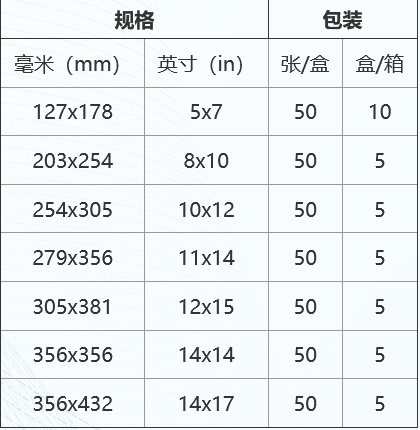Common specifications of CT films include 8×10 inches, 10×12 inches, 11×14 inches, 13×17 inches, 14×17 inches, etc.
The following is a detailed introduction for you: – 8×10 inches: With a size of 20.32 cm × 25.4 cm, it is mostly used for photographing smaller parts or local details, such as local parts of the extremities joints, local scans of the skull, etc., and can clearly show the local tissue structure.
10×12 inches: That is 25.4 cm × 30.48 cm, and it can be used for scanning and imaging of some medium – sized parts, such as the frontal and lateral views of the chest, some areas of the abdomen, etc. It can display the anatomical structure and pathological conditions of the corresponding parts well. Medical supply: CT film 10×12 inches – 11×14 inches: Approximately 27.94 cm × 35.56 cm. In practical applications, it can be used for photographing slightly larger parts, such as a certain section of the spine, the pelvic cavity, etc. It can provide more comprehensive imaging information, which helps doctors observe the scope of the lesion and the relationship with surrounding tissues.
Medical supply: CT film 11×14 inches – 13×17 inches: With a size of 33.02 cm × 43.18 cm, it is commonly used for the overall scanning and imaging of larger parts such as the chest and abdomen. It can completely display the shape, size, position of important organs such as the heart, lungs, liver, gallbladder, spleen, and kidneys, as well as the relationship with surrounding tissues, which is of great value for diagnosing diseases in the thoracic and abdominal cavities.
– 14×17 inches: With a size of 35.56 cm × 43.18 cm, it is a relatively commonly used large – size film specification. It can be used for scanning and imaging of various parts of the body, especially widely used in the examinations of large – scale inspection equipment such as multi – slice spiral CT. It can meet the high – resolution imaging requirements of most parts of the human body and provide doctors with more abundant and accurate diagnostic information.
- Patented technology, fully digital one-step imaging
- Thermal imaging, no toxic gas volatilization
- Various sizes and configurations are available
- Storage and transportation without light, refrigeration


